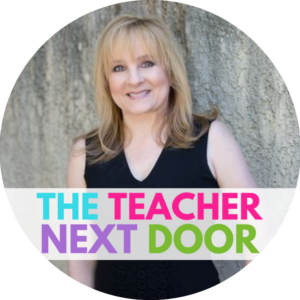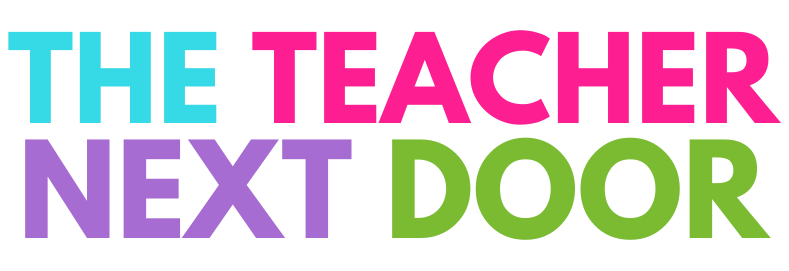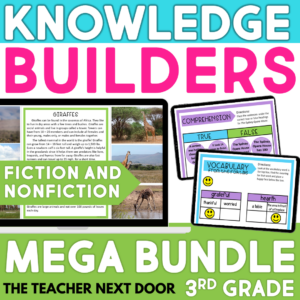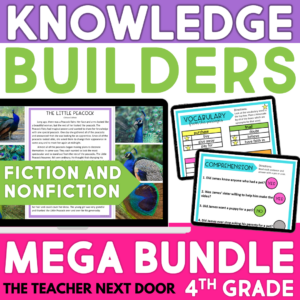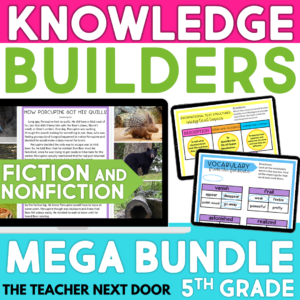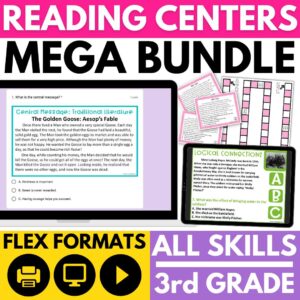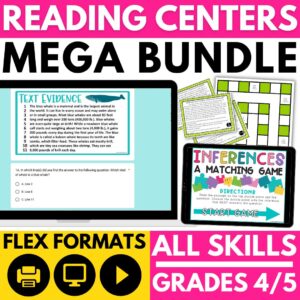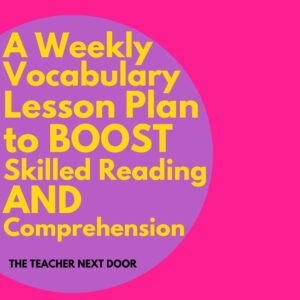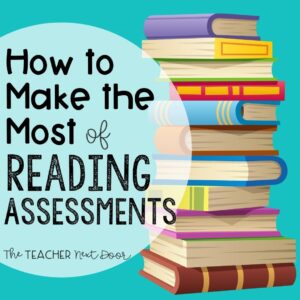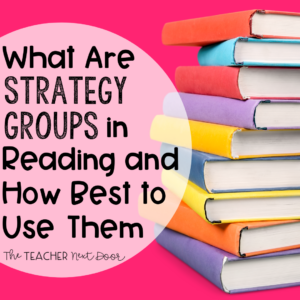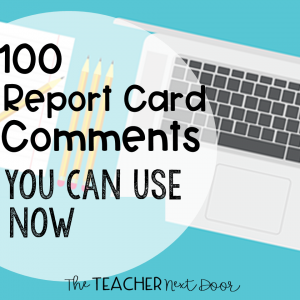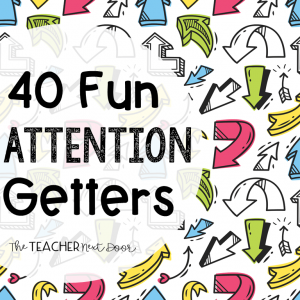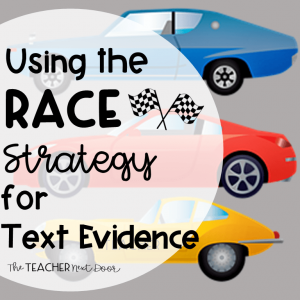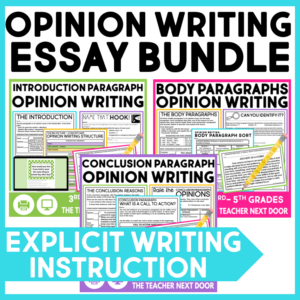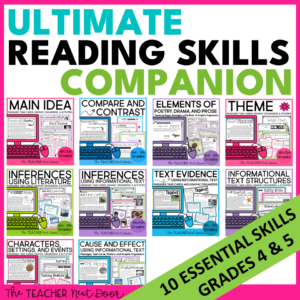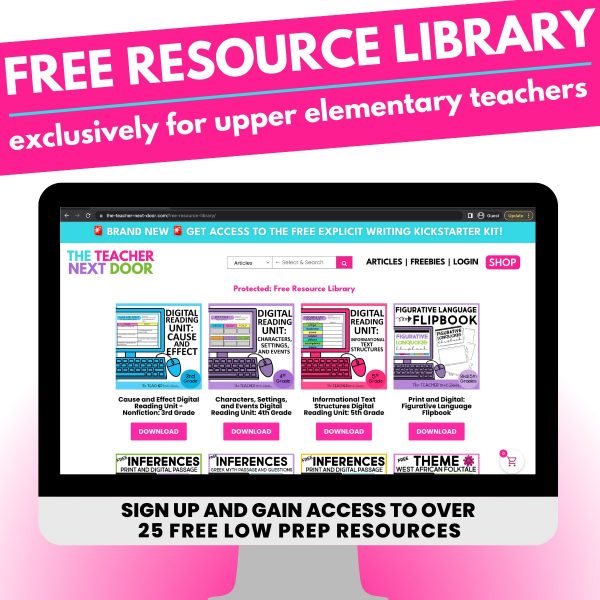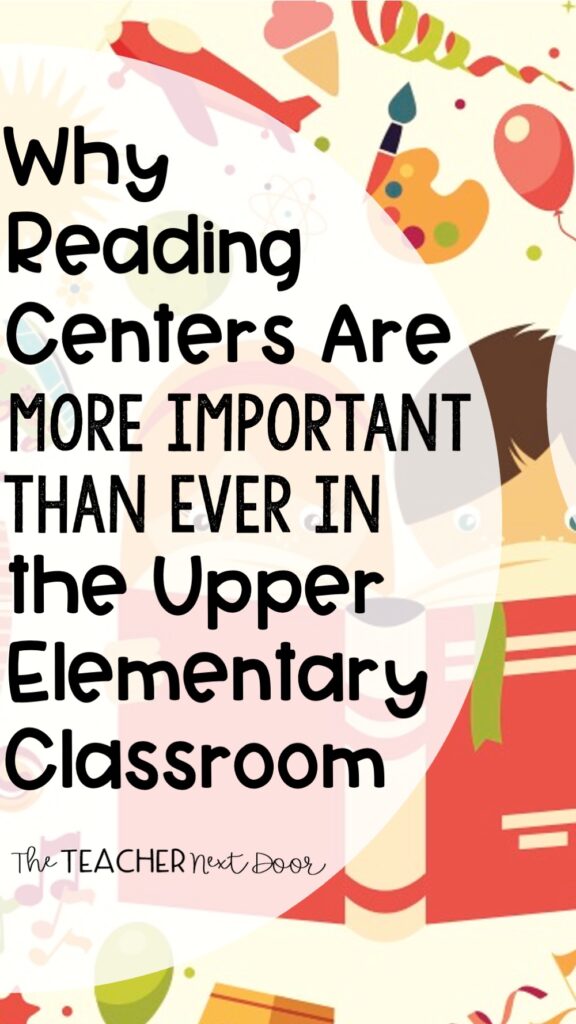
With the ever-changing landscape of the upper elementary in-person (and virtual) classroom over the past few years, reading centers are more important than ever!
After the last year and a half of uncertainty in the classroom, reading centers will help students get back into the groove of engaged learning while you, the teacher, facilitate vital small groups.
In these small groups, we will be meeting students where they’re at while focusing on closing any learning gaps that have been so unfairly cast on our ever-resilient students.
How do reading centers benefit students?
- Reading Centers add variety to learning and to your daily routine
- They allow teachers to easily differentiate learning
- Teachers can cover and reinforce reading skills and standards throughout the year
- Students have a dedicated place to practice important soft skills like collaboration, problem-solving, and communication
HOW TO SET UP READING CENTERS (SUCCESSFULLY!)
Planning is your best friend, teacher.
If you’ve been teaching for a while, you likely already know what you’re teaching and when. With any new group of students, you know you’ll need to make changes along the way, but it’s unlikely that your skeleton plan will change too much throughout the year.
If you’re new to teaching or you’re teaching with a new reading curriculum, chances are that you likely will need to really take a good, hard look at your scope & sequence. This will help you set your pacing for the year.
As you review your pacing, look for places where you can easily fit spiral review of key reading skills like main idea, theme, inferencing, etc.
Feel like looking at the entire school year is a bit overwhelming? You’re not alone!
Instead, create a plan that runs month-by-month. In August, only worry about planning for September. In September, take a look at October, and so forth!
A routine will make your teacher-life a million times easier.
In just a paragraph or two, we’re going to get into the types of reading centers that you can offer within your classroom. A word to the wise, don’t try to incorporate everything.
Pick a few key centers to incorporate each week. I like to stick with 5. If you pick a reading game center, choose to incorporate a reading game every week. This will make lesson planning a much simpler process because you know exactly what you’re looking for, and you’re not looking to reinvent the wheel each week.
Consider your physical space.
Classrooms never seem big enough, so this can be a challenge. I like to have 4 – 5 kids at each center (the smaller number, the better), but it depends on the class size. If I have 28 kids, that means about five to six center areas.
Since my classroom is pretty small, when kids do the independent reading center, they stay at their desks/seats. That leaves me with 5 center areas to plan.
Types of Centers
One of the questions teachers often ask is what kind of centers to include. Here are some suggestions that I’ve used in my classroom. I don’t use all of the centers suggested at the same time but do mix up some of the centers every now and then for a bit of variety.
A fair warning, don’t change up your centers within the first few weeks of school, or even within the first quarter. Let students become accustomed to your expectations and procedures before changing things up.
In my classroom, each center runs for about 20 minutes, and the total center time is one hour, which means students will visit 3 centers each day.
Independent Reading – This is one that ALL students do every day! It’s important to me that students self-select books based on motivation and not reading level.
My students have their books ready to go at their desks or in their book bins. We don’t waste time looking for books to read during independent reading time. That time is sacred!
Small-Group – This center can go one of two ways. 1) Reader’s workshop style, where students meet with me to read and work on the reading skill that we are focusing on currently. Structured Guided Reading style, which follows the instruction and guidelines of your school’s program.
Word Work – At this center, students work on spelling, grammar, context clues, and vocabulary. They may have a worksheet, but more often than not, they play a digital game. (Way more fun and no cleanup!)
Interested in incorporating Grammar Games in your centers? I was too, but I couldn’t find anything out there that I loved… so, I made my own! I created a bundle of 30 Print & Digital Grammar Games. There’s a pack for third grade, fourth grade, and fifth grade to cover ALL language standards.
These games target grade-level skills and really make grammar way more fun than the traditional DOL or worksheet. A huge time saver for sure! Best yet? Buy them once and use them, again and again, every year. Oh, and I made sure to make the digital version self-grading… you’re welcome. 😉
Informational Text – This center is filled with children’s news magazines like Scholastic News, Time for Kids, etc. (I keep the old ones and recycle them year after year in my centers.)
For accountability in this center, I use graphic organizers. Students read an article, fill out the template, and then are free to continue reading whatever they’d like at this center. This is by far one of my most loved centers.
Technology Center – Every school is a bit different, but whether you are blessed with tons of technology or are scraping by with a few older computers, there are still lots of great websites students can access with your direction at this center.
Here are some you might want to check out:
- Freckle Education (formerly Front Row)
- Edcite
- Newsela
- MobyMax.com
- ABCYA.com
- Edmodo
- National Geographic Young Explorers
- Big Universe
- Vocabulary City (formerly Spelling City)
I’ve also created Standards-Based Digital Reading Units for 3rd, 4th, and 5th grade. These huge bundles give lots of focused, paperless practice and they’re done for you. No prep, no planning, just click and assign.
3rd Grade 20 Reading Units Digital Reading Bundle
4th Grade 20 Reading Units Digital Reading Bundle
5th Grade 20 Reading Units Digital Reading Bundle
Genius Hour – If you’ve never done Genius Hour with your students, you’ll want to definitely look into it. I used to call these independent projects. Students are able to research and read about topics of interest and then prepare some type of presentation to share what they’ve learned with the class.
Genius Hour projects are ongoing projects that students complete on their own timetable, although you can set guidelines for how many they need to complete a semester, for example.
I tend to let it be more open-ended, as long as I see them engaged and focused. I know that some projects may take a number of weeks, while others may take two center rotation times.
Reading Skills – At this center, I tie in work that matches our current reading strategy. Reading is my very favorite subject, so I have lots of reading units already prepared, which are no-prep and print-and-go. Click here if you need some fresh reading units for this center.
Writing – Students may create poetry, write a letter to the principal, or create a personal narrative in their writing notebook.
This is NOT our main writing time, however. It’s more of a chance to let students experience low-pressure writing, which is not specifically connected to a writing lesson.
This makes this center much more enjoyable for my reluctant writers. Plus, they can add in some artwork when they’re finished. A big buy-in for many students!
Reading Games – I love this center because it is rigorous while masquerading as fun! Kids at this center play games that are connected to this week’s reading skills, like main idea, cause & effect, theme, or character traits.
I actually created a whole series of reading games, just because I really needed them for my classroom and thought others might too.
There is a game for each standard, and they provide so much focused practice. I really love these! There’s a set of 20 Reading Games Centers for 3rd Grade and 20 Reading Games Centers for 4th/5th.
3rd Grade Yearlong Set of Reading Games Bundle
4th and 5th Grade Yearlong Set of Reading Games Bundle
Each bundle of reading game centers has 10 Fiction Games and 10 Nonfiction Games that come in three different formats to meet your needs, no matter how ever-changing the classroom may be these days! You’ll get printable games with game boards, interactive PDFs for major fun, and self-grading Google Forms that give kids instant feedback and give you instant student data!
Read to a Friend – In this center, I have a variety of materials like poetry books and mini-plays for students to read together as they practice their fluency. I also like to place high-interest picture books in this center!
Even for 5th graders, you might be surprised at the complexity level of many picture books! Kids love them, and they really are beneficial for them.
Sometimes I have students bring their own independent books to share with each other. Other times, I have a book sampling basket at the center filled with book underdogs! These are some lesser-known books that I want kids to try. Their job is to read the book summary on the cover and to take turns reading either a paragraph or a page at a time.
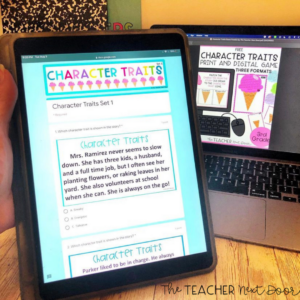
High Expectations and Routines are Key
As students begin moving through centers, you’ll want to ensure to practice routines and expectations for a good month before relinquishing total control. A well-oiled machine only runs perfectly because someone took the time to take care of it.
If you has meaningful conversations with your students about why you use reading centers in your classroom, how to use reading centers in your classroom, and most importantly, how to clean up reading centers in your classroom, you’ll be good to go come September or October.
The best feeling is when you know that you can have a sub walk in and have your students working independently through centers because they know the expectations like the back of their hands.
Want more information about why literacy centers are beneficial for kids in grades 3rd – 5th?
If you like this post, I would love for you to pin it or to share it with a teacher friend.
For more ideas and strategies focused on upper elementary, be sure to sign up for The Teacher Next Door’s free email newsletter! Bonus, you’ll also gain access to my FREE Resource Library, which contains exclusive upper elementary freebies that you won’t find anywhere else!
